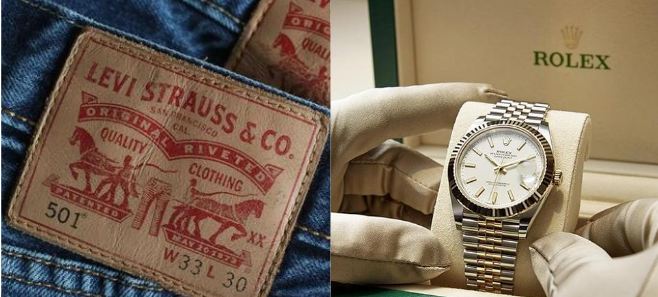For a long time in human history, mankind survived on the bare minimum without seeking anything remotely luxurious. The cavemen remained modestly dressed while the food and eating habits largely remained pedantic. However, ever since the industrial revolution and the rise of a capitalistic society, consumers across the globe have become brand conscious.
So much so has been the influence of brands that people blindly run after the luxury companies, who sell their products at overly inflated prices. If we take clothing as an example, earlier the critical parameter for buying a piece of clothing used to be its durability and comfort.
However, the main selling point in today’s climate is the logo of a particular company that attracts attention. People prefer brands over the basics of cloth buying. Styling was the parameter where the small and medium brands metamorphosed themselves into high street brands.
Conspicuous consumption
The thirst for a luxury brand or rather its tag boils down to one common facet. Conspicuous Consumption. It is nothing but an act of displaying ostentatious wealth to gain status and reputation in society. The theory was first discussed by American economist and sociologist Thorstein Veblen in his book, “The Theory of the Leisure Class,” in 1899.
Developing countries may have relatively higher levels of conspicuous consumption, because of extreme income inequalities. As for developed nations, the luxury brands and their consumption are on a filthy level scale.
“Experiential luxury”—think high-end hotels, designer clothes, bags, watches, cars, resorts, cruises, and restaurants have been one of the most dynamic and fast-growing components of the luxury sector.
Luxury brands were not always posh
While Luxury brands appear novel and sophisticated, it hasn’t always been the case. Most of the luxurious brands rose from humble beginnings and were not always as posh and extravagant. Perhaps, it explains the brittleness of the luxury brand industry which is built on a placebo effect.
Take Levi’s for example. The American company is one of the most iconic brands in the world. While it may have a small affordable range for the upper-middle class, most of Levi’s clothing is expensive and out of the reach of the common man.
Levi Strauss, the founder of Levi’s was a German-Jewish immigrant based out of San Francisco. He was a merchant who started Levi’s by supplying standard-fit “overalls” clothes to miners trying their luck in the Gold Rush. Yes, it may come as a shocker but Levi’s simply made clothes for the mineworkers in its initial days.
Often dubbed as the pioneer for denim jeans, Strauss stole the idea and improved upon it. In 1873, Strauss spent $69 for the patent to another immigrant’s idea for making these work trousers stronger, by riveting the most critical points in their construction.
By the 1890s, the characteristics of a pair of Levi’s that might be recognisable today were all in place: the orange-tan stitching, the arcuate on the back pocket, the rivets, the watch or coin pocket, the lot-numbering system, and the oft-referenced two-horse leather patch.
Rolex and its rise to the top luxury brand
The same is the story with Rolex – the luxury watch brand. The company is not an affordable brand for laymen by any stretch of the imagination. However, back in the day when soldiers and common men wore it, Rolex was the go-to choice.
However, as the company pioneered and invented several major watch concepts, such as the first “certified chronometer,” the first effective “waterproof” and dustproof watch casing, the first wristwatch with an automatic changing date, and the techniques used in mass-manufacturing of premium watches – it became bigger.
Ultimately, the dawn of the luxury watch industry as we know it today dates back to the mid-1980s. It was around then that the Swiss finally found their way out of the quartz crisis that almost completely destroyed them.
Rolex was at the right place at the right time. The company had already rightfully gained its claim to fame of being a technologically advanced company. The Swiss crisis only added to its fortune.
The result? Rolex is now so much more than “just” a watchmaker – they have firmly established themselves as one of the world’s leading luxury brands.
Luxury brands possess the magnetism that attracts the consumers and gives them a belief that they have made it big in their lives. As materialistic as it may sound but owning a luxury brand and its product is a sure shot way to climb the social ladder of hierarchy.
